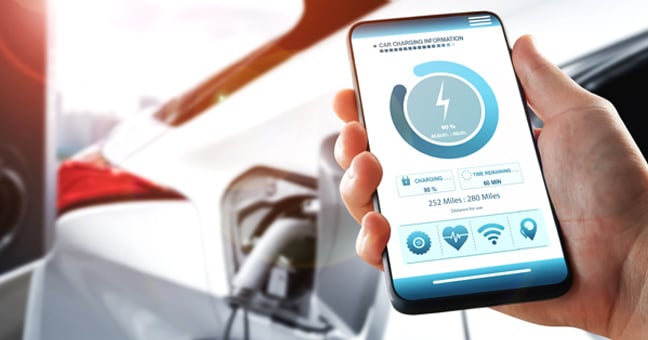

Dec 23 2024
By Haylee Eaton
Electric vehicles (EVs) continue to gain traction in the automotive markets, posting record high sales volume and market share in 2024. As more consumers inquire about EVs, questions about charging options and battery longevity are natural, and confusion around the jargon for the different types of EV chargers can be expected. Various types of charging levels are available–each with its own speed, convenience, and impact on battery health. Properly understanding these choices can significantly extend your EV’s lifespan and preserve its performance.
A previous article by DataOne compared the steady, gradual charge rate of Level 1 to the rapid power of DC Fast Charging. Each charging option discussed in that article has unique benefits, potential drawbacks, and ideal use cases. However, by understanding how these charging speeds impact battery health, the everyday user can make more informed decisions that balance convenience and long-term performance for EVs.
Level 1 chargers are the slowest of the three charging levels (typically providing about 2-5 miles of range per hour), which is why the majority of public EV charging stations consist of faster charging options. Level 1 charging, while slower to fully charge the vehicle, is often the most practical choice for residential use. The primary advantages are simplicity, convenience, and affordability. Homeowners* can connect the vehicle to an existing outlet while parked in the garage or driveway. This is the best charging option for drivers with short commutes or limited driving needs. However, the main downsides are the slower charging speeds and remembering to plug in each night.
Charging at a slow rate generates minimal heat, which results in very low battery degradation over time, making this method widely regarded as the most gentle and effective approach for maximizing battery longevity and overall health. Level 1 charging minimizes the number of high-voltage cycles the battery experiences, reducing the stress on battery cells and maintaining a more stable state of charge. Since the battery is charged at a low, steady rate, internal temperature fluctuations are minimal, helping avoid the chemical reactions that lead to degradation over time.
*Level 1 charging may not be an option for consumers in apartments or shared living spaces.
Level 2 charging delivers about 10-30 miles of range per hour and strikes a balance between both charging speed and efficiency. As a step up from level 1, these chargers are primarily found at home, the workplace, and public charging stations due to being compatible with most EVs on the market today, and are ideal for daily top-ups, providing a convenient middle ground between speed and battery preservation. The main advantages of level 2 charging are faster charging times, ideal for longer or daily commuting, and installation versatility. However, level 2 charging typically comes at a higher initial cost, especially if choosing to install it at home due to needing a dedicated charging station.
While Level 2 charging generates slightly more heat than Level 1 charging, it remains within a manageable range for most EV batteries, enabling regular use without causing significant degradation and thus preserving battery health over the long term. Level 2 charging is well-suited for the "sweet spot" of charging—keeping battery levels between 20% and 80%, which is considered ideal for battery health. Many manufacturers recommend Level 2 as the standard for preserving capacity over the battery’s life cycle, as it provides a moderate charge rate that won’t overheat the battery, even if done frequently. This is why Level 2 charging stations are often the default choice at commercial sites and for routine company use.
Direct Current (DC) charging offers a fast charging solution that can cater to the needs of every driver. By using a high voltage, DC charging can deliver about 80% of a charge in 20-40 minutes. This type of charging can be ideal for long-distance travel and reducing charging downtime.
However, this charging method is best when reserved for long trips or emergencies to help preserve longer-term battery capacity. Over time, frequent use of DC Fast Charging can also reduce a battery's "usable" capacity, meaning the maximum charge it can hold slowly decreases with each cycle, making it less ideal for preserving long-term battery health. This phenomenon, often called capacity fade, occurs because fast charging amplifies the buildup of heat and chemical wear, leading to irreversible changes in the battery’s anode and cathode. As a result, manufacturers generally advise against relying heavily on DC Fast Charging if maximizing battery lifespan is a priority.
Deciding how quickly to charge your vehicle depends on the needs of the user while understanding the effects of each charging method to allow EV owners to maximize battery longevity, reduce long-term costs, and maintain performance. Level 1 takes time to charge, but is going to offer the most convenience for the everyday user while still ensuring the health of the battery. Level 2 is a nice balance of speed while still focusing on battery health, but requires installation for at-home use. DC fast charging offers convenience when public charging but should be used in moderation to prioritize battery health. There is no perfect charging method, but knowing the differences between the three can help drivers make the best choice for themselves and their vehicle longevity.